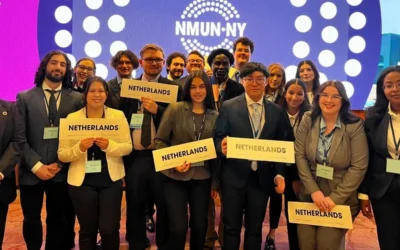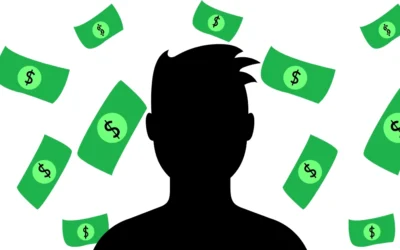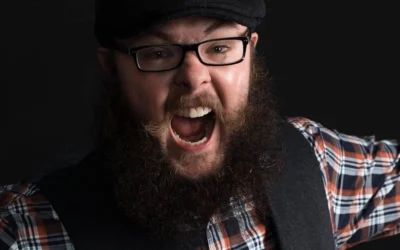It’s well established that America has a firm monopoly on the world’s media and, because of that, controls a lot of what the world sees, hears, and thinks. It would be difficult to find someone who doesn’t know Hollywood as the Promised Land of movie magic. America’s political soft power finds strength in its stranglehold on storytelling, and that soft power has American ideals naturally spilling over into Canadian minds.
Canadian political philosopher George Grant predicted that Canada would eventually lose its cultural identity to America by virtue of the countries being neighbours. Of course, the meteoric rise of the internet and the media services it offers may expedite that process by allowing people from around the globe to consume American content wherever and as often as they want.
According to a study on Canadian media usage trends conducted by the Interactive Advertising Board of Canada (IAB), nearly 60 per cent of adults between the ages of 18 and 34 were subscribed to Netflix in the spring of 2016. In addition, the study revealed that 27 per cent of adults viewed television only online through aptly named “TV My Way” services, and that “cord-cutting” (unsubscribing from traditional TV services) adults have increased from 15 per cent in 2011 to 44 per cent in 2016.
It’s glaringly apparent that people want to consume content on their own terms, and many services have stepped up to the plate to provide this option.
In 2014, Bell Media created Crave TV, which was originally a complementary service offered alongside a traditional TV subscription. However, at the start of 2016, it became a standalone service similar to Netflix. Although Crave TV’s focus is solely on television shows and doesn’t boast Netflix’s library of movies, it is able to cater to Canadian users by being a Canada-only service.
In 2015, Bell Media announced that Crave TV would commission its first original series based on a popular Canadian YouTube series: Letterkenny.
The premise of the show is spelled out at the beginning of each episode (excluding the first): “There are 5,000 people in Letterkenny. These are their problems.” The show follows Wayne, the resident tough guy played by show creator Jared Keeso, and his entourage, Daryl (Nathan Dales), Dan (K. Trevor Wilson), and Katie (Michelle Mylett).
Since its launch, the show has quickly become a Canadian fan favourite.
“We’ve already made history. The deal we just signed with Bell is the largest episode commitment in the history of Canadian television,” Wilson says. “Being on Crave TV, too, being on a channel that’s not even really a channel, we’ve entered some new ground here. We’re sort of changing the way TV is done in this country.”
“The fact that we’ve won best directing, best writing, and best comedy at the CSAs (Canadian Screen Awards) … it says a lot about how sensibilities are changing and how comedies are changing in this country.”
In addition to acting on Letterkenny, Wilson recently put out a comedy album, entitled Sorry! (A Canadian Album), that pokes fun at Canada.
Although Letterkenny seemed to be an effortless, overnight success, that’s not quite the case.
Letterkenny’s creator, Jared Keeso, had an up and down career before eventually creating the series.
On Nov. 2, Keeso came to MacEwan University for the SAMU Speaker Series to discuss how he found success as a Canadian actor, writer, and producer.
“I just wanna say, in the grand scheme of things, I’m super-duper small potatoes, okay? I’m a McCain curly fry, for perspective. Let’s say a guy like Seth Rogen is like an Idaho potato the size of a pumpkin — I’m a tater tot,” Keeso says.
Before Letterkenny, Keeso had decent work as an actor, getting small parts in several TV series and films such as Smallville and I Love You, Beth Cooper. He also landed bigger roles, such as playing Don Cherry in two CBC biopics and, notably, his lead role as Ben Chartier in the TV series 19-2.
Keeso described auditioning for acting roles in Canada as a straightforward and fair process, compared to the unsympathetic auditions he has attended in Los Angeles.
“I would go in (to the casting office in L.A.) and a man or woman would introduce themselves as the casting assistant. There wasn’t a camera in the room and they would say ‘We’re just going to have you do one of the five scenes of the 20 pages that we asked you to (memorize)’,” Keeso explains. “No one in L.A. knew who I was and nobody gave a shit.”
Keeso elaborated that Letterkenny came about due to his frustrations with being unable to find a project he could be proud of after the show 19-2 was cancelled — something that Keeso found very disheartening and frustrating.
“If you don’t like anyone else’s shit, you make your own,” Keeso says. “So, I got started making my own stuff.”
In order to have complete control over his next project, Keeso saved money and invested it into the production of his own YouTube series, Letterkenny Problems.
“I wrote and produced five episodes and funded it out of pocket with money that I (had) saved,” Keeso says. “It was after I put (the first webisode) on YouTube that everything changed for me career-wise. That episode now has over seven million views on YouTube; the five episodes have over 30 million views.”
The fourth season of Letterkenny is now available to stream.
“We’ve already made history. The deal we just signed with Bell is the largest episode commitment in the history of Canadian television.”
—K. Trevor Wilson
What is most notable about the story of Letterkenny is its modern and fresh approach to its
Canadian roots.
Canadian film production is too well known for being Hollywood North, which typically refers specifically to the film industry in Toronto and Vancouver, and as being merely an extension of the American media machine. Canada deserves to have its identity and stories come through in its media more often.
Canada has time and time again proven itself as a culturally and creatively strong country, with artists like Justin Beiber and Drake making award-winning splashes on the world stage. So why aren’t more Canadians creating Canadian content for Canadians?
“Hopefully a few more executives will be inspired by Letterkenny’s success and take a risk on something,” Wilson says. “I think the success of Canadian shows, y’know, Mr. D, and Baroness von Sketch, and Trailer Park Boys, and ourselves (are) showing that there’s a larger market than I think people have previously thought for Canadian TV … I’m proud of my home and I love being a Canadian.”
Photography by SAMU.




0 Comments